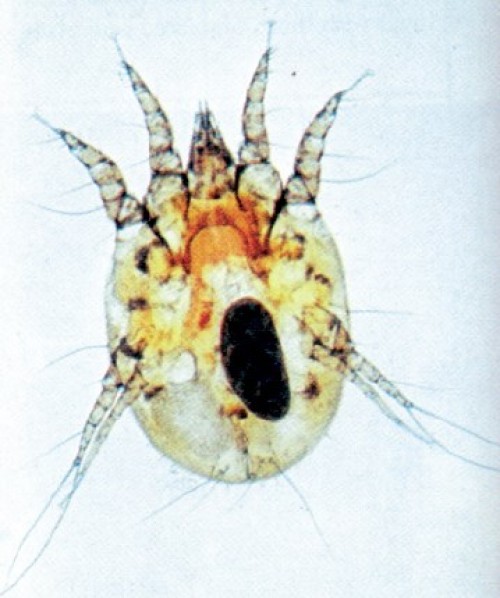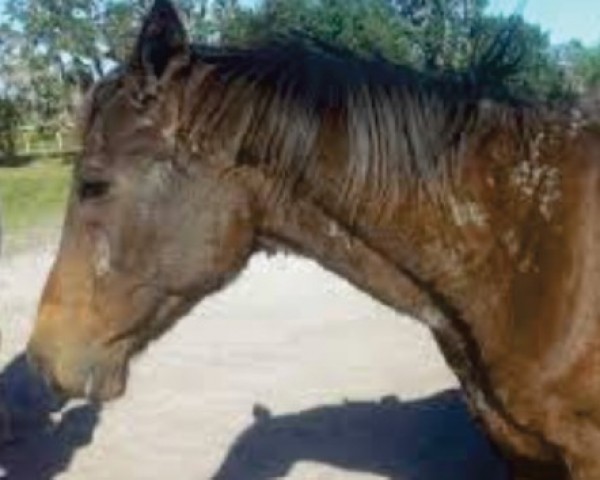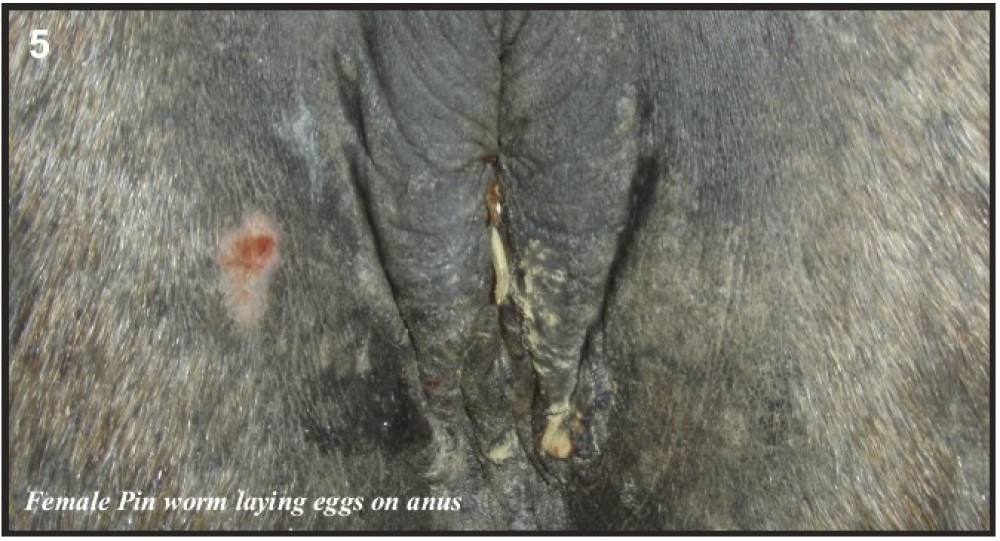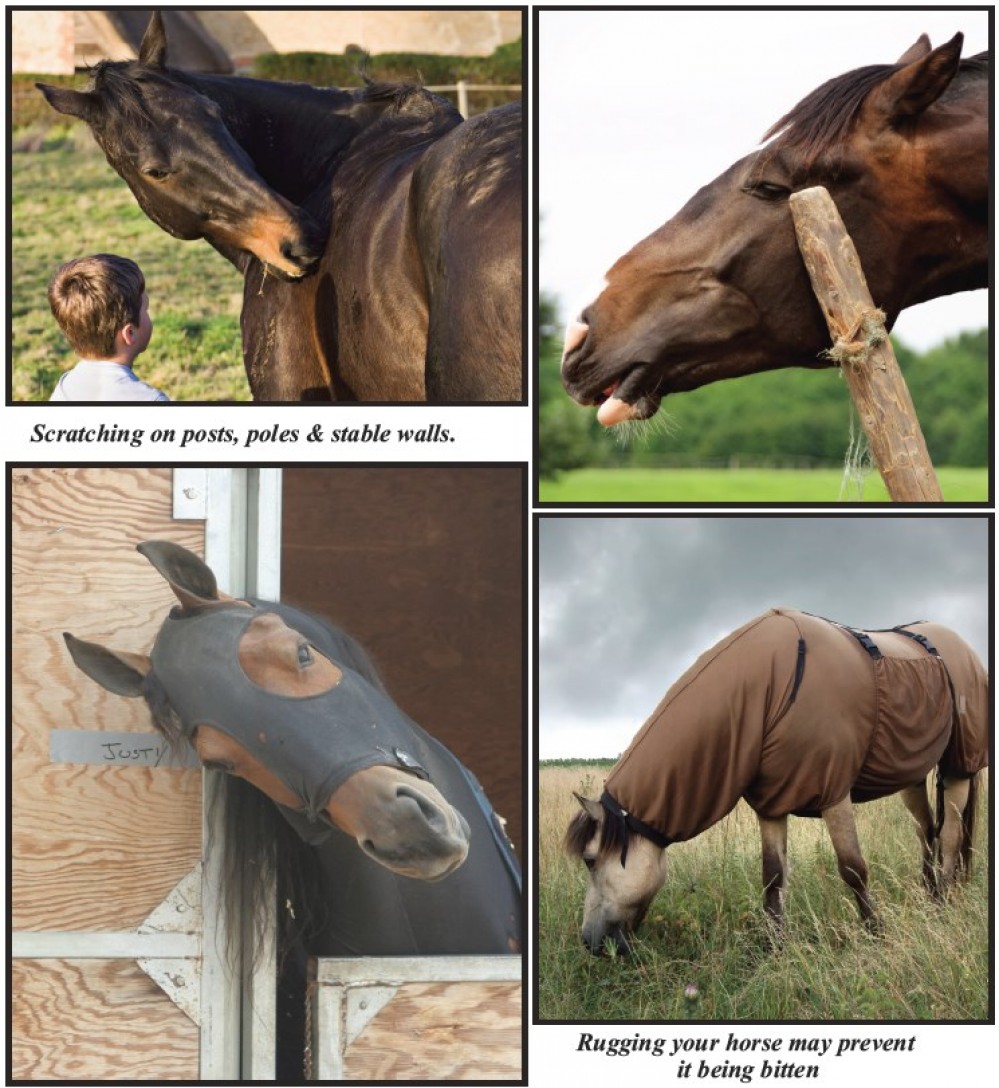

By Dr Oliver Liyou BVSc (Hons) MACVSc
Published in Equine News February 2014
One of the most poorly understood and managed conditions in horses is itching of the head, ears and mane. You will hear a zillion so-called cures for these conditions, which means that no one treatment fixes all itches and it continues to be an extremely frustrating problem for horse owners.
- Ear Mites (Psoroptes Equi) are just one of the possible causes of horses that scratch their head and necks. Other causes of itching of the face, head and mane include:
- Allergies to Culicoides - biting midges (Queensland Itch) - by far the most common.
- Allergies to dietary proteins or environmental allergens such as grass seeds, pollens, dust etc. Lice
- Fungal infections.
- Bacterial infections.
- Reactions to the dying larvae of the neck thread worm - onchocerca - following worming with a "mectin" compound wormer. But these lesions are usually under the neck, chest and body regions, as opposed to on top of the neck and poll region.
 Ear Mites are small insects, white in colour, and less than 1 mm in size, so are just visible to the naked eye. They invade the ears of horses and can cause intense itching, and rubbing of the neck and ears. Sometimes the ear will droop, due to intense itching, even to a point where it gets bruised so badly that a fills up with blood and needs surgery.
Ear Mites are small insects, white in colour, and less than 1 mm in size, so are just visible to the naked eye. They invade the ears of horses and can cause intense itching, and rubbing of the neck and ears. Sometimes the ear will droop, due to intense itching, even to a point where it gets bruised so badly that a fills up with blood and needs surgery.
Diagnosis of ear mites can be done by visually inspecting the inside of the ear, with a light and magnifying glass. Or by inserting a gloved finger deep into the ear (most horses don't like this, so best done when horse sedated), and rubbing against the inner ear's skin, and then examining the wax that comes out on the finger. If ear mites are present, they will emerge from the wax as tiny white specs that are brilliantly white, but move slowly on the surface of the wax.
But the reality with ear mites is that they are not common any more, mainly due to the widespread use of ivermectin wormers, which kill the mites, as they suck blood from the skin inside the ears.
So this takes us back to the other causes of itching of the head and neck regions of a horse.
Allergies (to biting culicoides species midges or pollens, dust etc.) are very common and seem more prevalent in some breeds such as Clydesdales. There is often no real cure apart from moving the horse to an area with no midges such as west of the Great Dividing Range. The frustrating thing is the allergy and itching may start on a horse at any age, from yearling to middle age.
The allergic itching response is an inappropriate reaction of the horse's immune system, so it can vary from year to year, and also with the amount of allergens (insects, pollens etc.) that the horse comes into contact with.
It is important to rule out the more treatable conditions such as lice, fungal and bacterial infections before treating allergies, as the treatment and management of allergies is often quite exhaustive and expensive.
The ideal way to diagnose allergic skin disease in horses is through ruling out other causes via close examination, skin scrapings, fungal cultures, cytology and microscopic examination etc., and then doing a skin biopsy. Intra dermal skin testing or blood allergy tests can be done as well, but this is more a job for an equine skin specialist.
Management of allergic skin disease in horses can be divided into 3 main components:
1. Preventing the horses getting access to the allergen
E.g. moving it to another area, using insect repellents, rugging the horse (not before it has stopped itching though as it will often rip the rug to pieces!), putting horse under a low roof (midges don't like going under low roof) from 2 pm onwards when the midges start biting, having the horse able to stand in front of a big fan from 2 pm onwards (midges are poor fliers so will get blown away from the horse in front of fan).
Use of oils on the skin may create a barrier to which the midges don't want to bite through etc. Midges usually bite only along the top line, so create itchiness on the ear, mane and tail region. Feeding of substances such as sulphur, garlic, apple cider vinegar, salt bush, herbal tonics etc. all are reported at times to help, but very few of them have been scientifically tested, so it is hard to recommend them before adequate testing has been done.
It amazes me how much resistance there was to the declared lack of testing of the Hendra Vaccine, yet owners will happily feed and pour on their horses a massive range of untested and unproven tonics, additives, herbs etc. that are available for sale for use on horses???
2. Modifying the horse's immune response to the allergen
E.g. high doses (up to half a cup morning and night) of omega 3 oils will help 1 in 4 itchy horses. Corticosteroid injections, granules in feed or creams will also reduce the inflammatory response and thus help “dampen or even stop” the itchiness whilst it is on the medication. This may be helpful to allow you to rug the horse to prevent it being bitten, and stop the horse tearing the rug up.
3. Preventing the horse from itching on posts, trees and fences.
Firm itching actually often causes more damage to the skin and thus more itchiness as a result of the “itching chemicals” being released in the damaged skin. This is referred to as the “itch-scratch cycle”.
Electric fences can help here, but it must be stressed that this technique should not be done without heavy use of A and B, or the horse will be so frustrated that it will revert to rubbing itself along the ground like a dog!!!
Many allergic skin diseases in horses are seasonal, and so affect the horse more in spring and summer, and reduce in severity through winter, when there are less insects and pollens around etc. If it is dietary allergy, then it may be year round.
If your horse is only scratching its tail, and not mane and ears, you should consider the possibility of it having pin worms. (Oxyuris Equi) Pin worms (fig 4) are not blood sucking worms, so usually don't cause too much illness in horses like some other worms, but they cause an itchy tail. And because they don't suck blood from the bowel wall, they can be harder to kill than other worms, and often need a wormer with pyrantel or morantel in them. Such wormers include Strategy T or Ammo.

The classic sign of pin worm is the yellowy green paste around the anus, which is “laid” by the female worm (fig 5) and contains thousands of eggs. You can put a piece of sticky tape across this and examine it under the microscope and you will see thousands of eggs!
So when the horse rubs its tail on a rail, the eggs are deposited on the rail, waiting for a curious horse to come and lick or muzzle the rail, and then they start a new life cycle in that horse!


